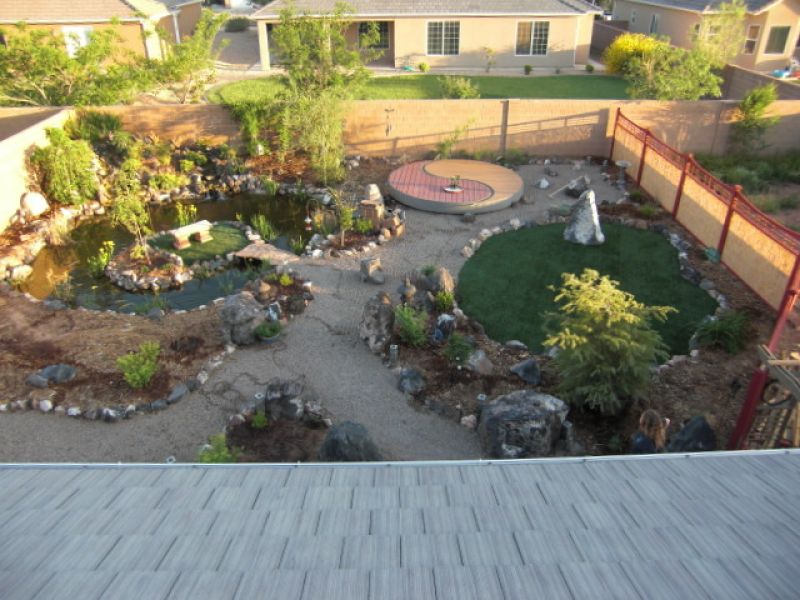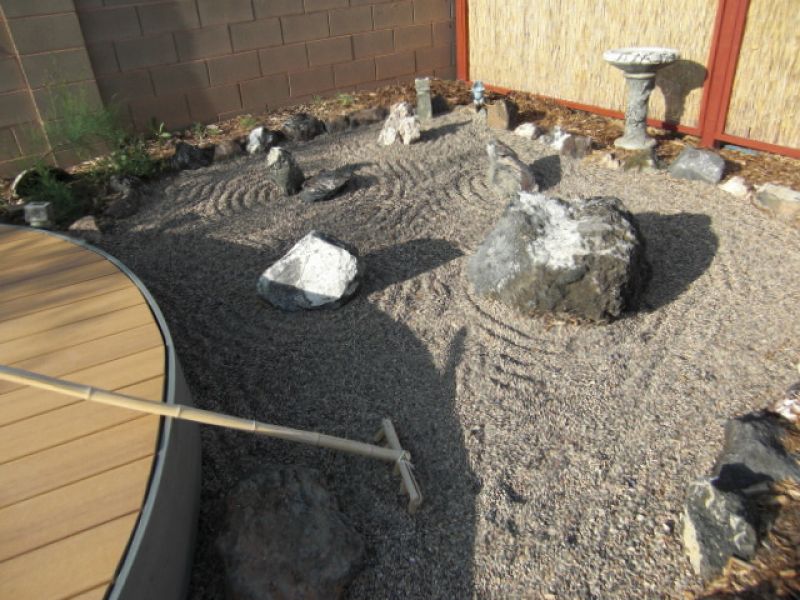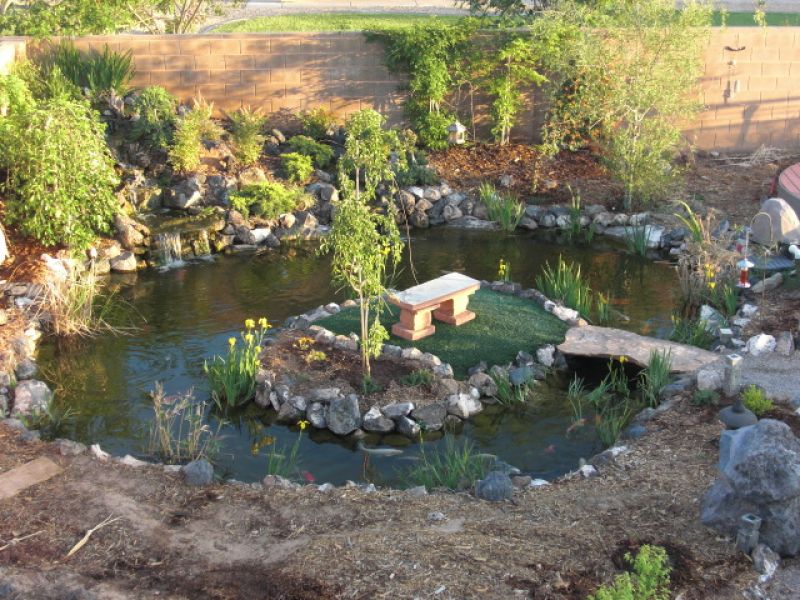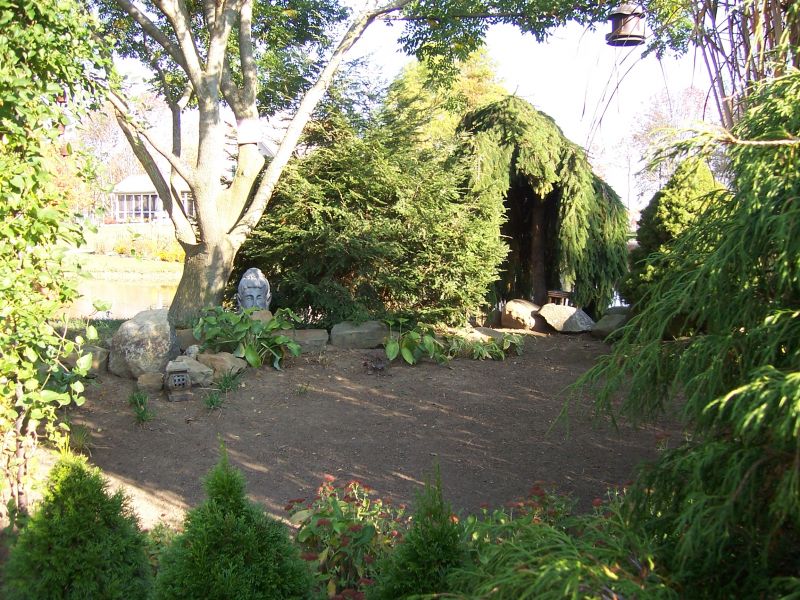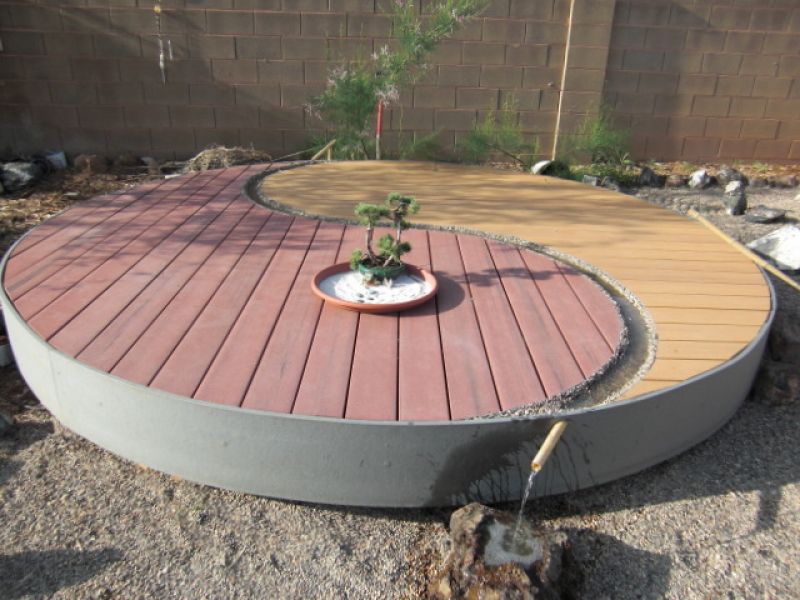Searching for unique ideas on what to do with that small, secluded corner of your yard? Look to the East. Asian-themed gardens are prized for their simplicity, their meditative peacefulness, their effortless flow, and their exquisite balance of traditional elements. While designing a true Japanese Zen garden can take years of study and a lifetime to execute to perfection, borrowing a few key elements to put in your own landscape will almost certainly make a dramatic statement.
- Size: Asian gardens tend to work best in somewhat confined spaces, since one of the goals is to mimic the grandiosity of nature on a very small scale. Tiny intown lots and walled courtyards work especially well. Make the facade of the wall or fence fit the theme by painting it red or lining it with bamboo
- Pathways: Even these small spaces are normally broken up into smaller areas connected by pathways, with one self-contained area leading to the next, and the next, and the next.
There are three distinct areas at work here: the pond at left, the lawn at right, and the amazing circular yin-and-yang deck at the back fence. All are connected by a meandering gravel pathway that encourages- practically dares- you to keep exploring and discovering new things.
-
Rock: Earth is one of the traditional elements that must be represented in a Japanese garden, and its usually done with rocks. Large boulders are often partially-buried in the ground to represent mountains, with excruciating care taken to orient the boulders so that the side with the best character- which can include shape, texture, color, and moss growth- faces a certain direction. Its a legitimate art form in the East, where the precise placement of a single boulder can take weeks of thought. Stone slabs become benches for meditation. Rounded fist-sized stones are often lined to form rivers, like in Colleen Chins yard in Issaquah, WA:
Sometimes the rocks are all set on end at a matching angle to give the illusion of flowing water! And then theres the classic example of a stone Zen garden, where a large expanse is filled with pea gravel (or sand) and dotted with larger stepping rocks or seating boulders, to be raked and contoured as a relaxing form of contemplation and creativity.
-
Water: A water element is also vital to an Asian garden. It can come in the form of a pond, a small waterfall, a trickling stream, a water bowl, a birdbath, or a dribbling fountain. In their Utah landscape, the Evanses incorporate two waterfalls and a working stream, but the centerpiece is an 8,000-gallon koi pond!
-
Plants: Picking the right plants for an Asian garden completes the look. Some popular tree choices are Japanese maple, cedar, hemlock, and pine. An exaggerated weeping growth habit is often used to create interest and even privacy. Check out the gorgeous specimen in the background of this shot from Sam(Sandy):
Other great plant choices in an Asian garden are bonsai, bamboo, nandina, magnolia, azalea, camellia, pittosporum, podocarpus, tea olive, fern, yew, lily, acorus, dwarf mondo grass, even moss! I know a couple who planted a Japanese maple and then sculpted the bare ground under it to form concentric-circle rings around it, as if the yard was water, and the tree had been dropped in. There they transplanted thin layers of moss taken from a friends wooded yard. The final effect was a rippling pond made entirely of moss!
-
Discovery: It is said that a Japanese garden cannot be fully explained in words; that it must be experienced. It must be seen with the mind, not just the eye. To that end, most Asian-themed landscapes are filled with tiny-yet-profound details that are known only to those who take the time to explore the garden fully. This often means deliberately hiding or blocking certain elements from view so that they can be discovered in a new way. A famous story about the great 16th-century tea master Sen no Rikyu illustrates this. In a garden near Osaka, a stone water basin stood with a panoramic view of the sea. Rikyu planted two hedges, one outside of the other in such a way that they completely obscured the ocean view. But when a visitor would bend over the water basin to dip his hands in, he could see through a carefully-planned break in the hedges. The story goes that Rikyu intended for his guests to see their reflection in the water basin, then look up to see the infinite ocean, and realize at that instant that the water in the basin and the ocean are one, just as the mind and the universe are one. Powerful and heady stuff that most of us would never be able to pull off in our yards. But having a pathway twist and disappear behind a row of tall plants or tucking small statues in along a pathway is an easy way to encourage exploration. The Evanses created an eye-catching feature with that yin/yang deck. But only when you venture into the yard and stand on it do you realize that they have a working stream running through the center of it, fed by a bamboo fountain and emptying into a stone water basin of their own!
